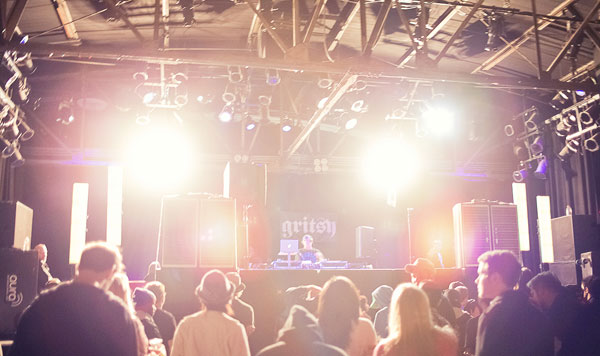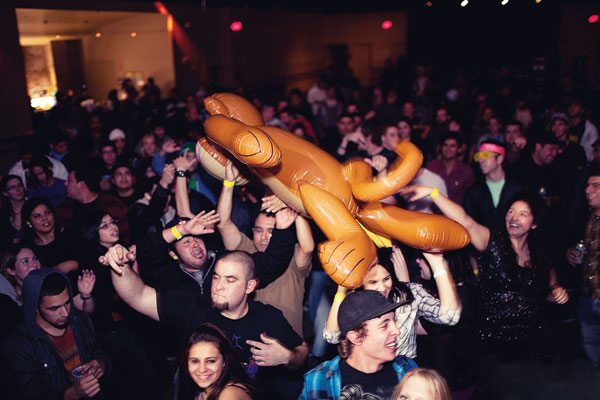DUBSTEP
New Music Genre Goes Mainstream

Jennifer Ferguson
The Signal
Move over techno; there’s a new form of electronic dance music in town.
 Dubstep originated as early as 1998. However, 2011 has been dubstep’s most influential year yet, with the music making a loud entrance into the culture of mainstream music.
Dubstep originated as early as 1998. However, 2011 has been dubstep’s most influential year yet, with the music making a loud entrance into the culture of mainstream music.
“Dub music is a form of reggae music,” said Amir Borhani, dubstep advocate and enthusiast. “In turn, dubstep is a derivative of reggae and hip-hop beats. That is what makes it so catchy.”
This genre, coined “dubstep” due to its ties to Jamaican “dub” music, is one of the fastest-growing fields in music history. Since what is believed to be the first recorded use of the term by Ammunition Productions in a 2002 cover story, the music has steadily gained momentum. In recent years, this momentum has spread from the U.K. to the U.S., and Houston is quickly getting involved.
“Personally, I’m attached to the music emotionally,” said Suraj Kurian, founder of Gritsy, Houston’s infamous dubstep movement. “It’s my crutch, my drug; it’s the way I breathe.”
While the music initially originated in a South London town, Croydon, it didn’t take long before it spread to other areas of the U.K. It was DJ Mary-Anne Hobbs who put dubstep on the map in 2006 with her BBC Radio special titled “Dubstep Warz.”
This initiation into mainstream in the U.K. was what dubstep needed to gain worldwide recognition. Before long, the music was being played in major night clubs and taking over other electronic genres all over the world.
“The speed at which [dubstep] caught on here in Houston as well as across the globe was unreal,” said Billy McCain, aka ‘Badbwoy BMC,’ dubstep DJ. “When I first heard dubstep, I knew right away that it was going to blow up, mainly because of the space in the music and the deepness of the bass.”
Indeed, bass is one of the most prominent elements of dubstep music. The idea is to not only hear the bass, but to feel it. Typically void of any vocals, dubstep uses bass as the driving force throughout the tracks. This paired with rhythm, dark overtones and atmospheric space, is what sets dubstep aside from other forms of electronic music.
“With dubstep, it’s a lot more space,” said Huy Cao, Gritsy photographer and DJ. “It’s kind of like music in moderation; it’s not just everything thrown at you at one time. With dubstep nights, the natural flow of the evening is much smoother.”
The course of the dubstep movement continues to flow smoothly. In 2011, mainstream artists Britney Spears, Jay-Z and Kanye West broke into the scene by releasing their own variations of bass-driven, dubstep beats. Moreover, American dubstep DJ, Sonny John Moore, aka ‘Skrillex,’ was nominated for five Grammy Awards that same year.
Nonetheless, as with any genre, there seems to be a sense of resistance toward dubstep music and many supporters believe that it is the very presence of mainstream, trendy tunes that are accountable for these negative associations.
“A lot of the modern dubstep that is really popular is just hype music,” said John Mullins, aka ‘John the Third,’ dubstep DJ and producer. “When people DJ that dubstep all the time, it doesn’t really make sense to people… it’s a lot of what kids want to listen to, but people are going to burn out on it so fast because there is no diversity in the sound.”
This is hardly the basis of original dubstep music. Dubstep music has expanded so drastically that there are many different sounds and styles associated with it. Much like any genre, one dubstep track by any given artist may completely differ from another.
“If [people] scratch and dig a little deeper they’ll find a buffet of bass, if you will,” Kurian said. “It’s not just that one type of sound… The rabbit hole goes so much deeper.”
As for the continuance in the movement of dubstep music, advocates seem extremely optimistic. Although there is slight opposition, the general consensus has great expectations for the future of dubstep.
“When [dubstep] first came out, people said no one would take the genre serious,” Mullins said. “Then it grew, and people said it would hit a peak and die out, but it just keeps building… There is still more of a life to it left.”
Video shot and edited by The Signal reporter Joshua Ojeda. Broadcast reporting by The Signal reporter Lakeisha Moore.


Pretty! This was an extremely wonderful article. Thank you for supplying these details.
get ur weekly dubstep fix from chicREMIX on locallivehouston.com every thurs. from 8-10pm